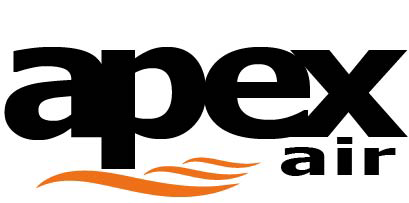Most people think of air pollution as an outdoor problem, mainly because that’s what media reports focus on. But the air inside your home can be just as polluted, maybe even more so. Poor indoor air quality can lead to a variety of health problems over time, and the effects of indoor air pollution can aggravate the condition of those already suffering from asthma, allergies and other illnesses.
How to tell if indoor air quality is bad? That can be difficult unless you have an indoor air quality monitor, because the airborne particulates that pollute the air — including chemicals, dust and other allergens — are largely invisible. However, there are symptoms of poor indoor air quality in your home that can alert you to potential problems. Here are eight warning signs to watch out for, and some tips for how to reduce indoor air pollution.
-
Your Indoor Air Is Making You Sick: Allergies and Respiratory Issues
One of the most common signs of poor indoor air quality is an increase in allergies and respiratory problems. If you or your family members are suddenly experiencing more frequent bouts of coughing, sneezing or worsening asthma symptoms, it could be a sign of airborne contaminants in your home. These irritants can include:
- Mold spores
- Pet dander
- Pollen
- Dust mites
- Volatile organic compounds (VOCs)
In some cases, poor air quality can even trigger allergies in people who have never had them before. If you or your family are sensitive to indoor allergens, you should consider installing air purifiers in your home as well as an indoor air quality monitor to keep track of them.
-
Frequent Headaches
If you’re experiencing frequent and persistent headaches, poor indoor air quality could be the cause. Airborne pollutants in high concentrations can cause inflammation in your sinuses, leading to headaches or migraines, possibly accompanied by fatigue, dizziness and nausea. If these symptoms begin appearing with no other known cause, it might be time to investigate your indoor air quality.
-
Insomnia and Fatigue
Poor air quality can have a big impact on your sleep quality, leading to insomnia and daytime fatigue. Airborne irritants can make it difficult to breathe easily at night, causing snoring, restlessness and trouble falling or staying asleep. A lack of quality rest can result in difficulty focusing during the day, decreased alertness, and reduced productivity at work or school. If you’re consistently waking up feeling tired despite getting your normal hours of sleep, your indoor air quality could be the culprit.
-
Excessive Dust
While some dust is normal in a home, if you notice it rapidly accumulating on your furnishings, it is probably having a detrimental effect on your air quality. If you find yourself dusting more than usual or notice dust on surfaces shortly after cleaning, it could be a sign of inadequate ventilation and/or dirty or clogged filters or ductwork in your HVAC system. Reduce indoor air pollution in this case by replacing your filters, and have your heating and cooling system professionally inspected and cleaned.
-
High Energy Bills
Poor air quality can also cost you money. When you have an excessive amount of airborne particulates in your home, it collects in your heating and air conditioning system, making it work harder to maintain comfortable temperatures and reducing the life of your furnace. This means higher energy usage, higher utility bills, and more frequent HVAC maintenance and repairs.
-
Unpleasant Odors
Bad smells are a sure sign that something unpleasant is in the environment, and it could be harmful. Those odors could be an indication of mold or mildew growth, or chemical fumes from household cleaning products or materials used in new carpet or furniture. Both can be irritating for people with allergies, elderly people and those with respiratory issues.
-
High Indoor Humidity
Excessive indoor humidity not only feels uncomfortable but can also foster the growth of various pollutants. Ideal indoor humidity should be between 30-50%. If you notice constantly foggy windows and mirrors, damp surfaces and persistent musty odors, your humidity is probably too high and might encourage the growth of mold and mildew. Make sure you have enough ventilation in areas that are prone to mold growth, such as the basement and crawl spaces, and consider using a dehumidifier.
-
Stale Indoor Air
If the air in your home feels stagnant or stuffy, it’s a sign of poor ventilation. This can lead to a higher concentration of indoor pollutants and accelerate other air quality issues. Proper ventilation is the key to how to reduce indoor air pollution and create a healthier living environment.
Concerned about your indoor air quality? Learn about our air purifier options! Contact the Apex Air team today.
